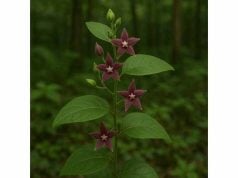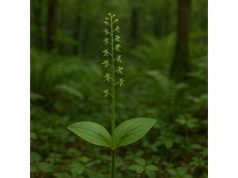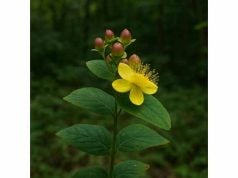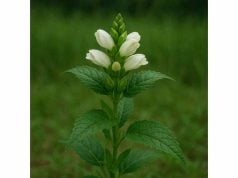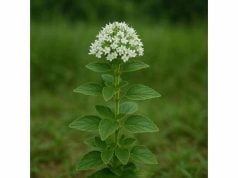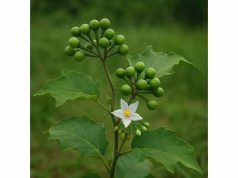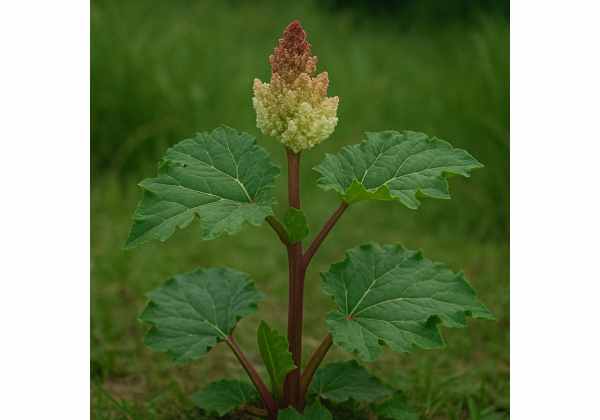
Turkey Rhubarb (Rheum palmatum), often celebrated in Traditional Chinese Medicine, is a powerhouse of therapeutic potential and culinary flair. Its robust roots and vibrant stalks house active compounds like anthraquinones, tannins, and flavonoids, which lend Turkey Rhubarb remarkable digestive, antioxidant, and anti-inflammatory qualities. Across cultures, this versatile herb has found its place in detox tonics, gentle laxatives, and even topical remedies for skin health. Whether you’re exploring Turkey Rhubarb benefits for digestive comfort or curious about its healing properties, this guide dives deep into its key ingredients, medicinal properties, and practical uses, blending expert insight with a friendly, conversational tone.
Table of Contents
- Botanical Characteristics and Habitat Overview
- Key Phytochemicals and Active Constituents
- Health Advantages and Fundamental Attributes
- Practical Applications and Safety Guidelines
- Research Highlights and Pivotal Studies
- FAQ
Botanical Characteristics and Habitat Overview
Turkey Rhubarb, known scientifically as Rheum palmatum, belongs to the Polygonaceae family, sharing lineage with buckwheat and knotweed. Native to the mountains of western China, it thrives in cool, temperate climates at elevations between 2,500 and 4,500 meters. Gardeners often describe its impressive stature—reaching heights of up to two meters—with large, triangular leaves on long, reddish-green petioles that resemble umbrellas sheltering a delicate bloom.
- Taxonomy and Nomenclature
- Kingdom: Plantae
- Order: Caryophyllales
- Family: Polygonaceae
- Genus: Rheum
- Species: R. palmatum
- Leaf and Stem Morphology
- Leaves: Broad, palmate with 7–9 lobes, smooth margins that may exhibit slight crinkles.
- Petioles: Thick, juicy, and often tinged with deep burgundy.
- Stems: Erect, succulent, providing sturdy support to the foliage.
- Flower Structure
- Inflorescence: Tall panicles bearing clusters of tiny, greenish-white to pink flowers.
- Bloom Time: Late spring to early summer, a striking contrast against the foliage backdrop.
- Growth Conditions
- Soil: Prefers well-drained, loamy soil enriched with organic matter.
- Light: Thrives in full sun to partial shade, though intense midday heat can wilt tender leaves.
- Water: Consistent moisture is key—avoid waterlogged conditions to prevent root rot.
- Natural Habitat and Distribution
- Originally found along mountain slopes and riverbanks.
- Cultivated globally in herb gardens, botanical collections, and sometimes for commercial extraction.
Understanding Turkey Rhubarb’s botanical profile lays the foundation to appreciate its Turkey Rhubarb applications in everything from herbal teas to potent tinctures. Its hardy nature and eye-catching foliage have earned it a place both in ornamental gardens and apothecary shelves worldwide.
Key Phytochemicals and Active Constituents
Turkey Rhubarb’s therapeutic versatility stems from a rich tapestry of bioactive compounds. Below is a numbered exploration of its most impactful ingredients:
- Anthraquinones (Emodin, Rhein, Physcion)
Emodin, rhein, and physcion are the hallmark anthraquinones in Turkey Rhubarb, renowned for their gentle laxative effect. By stimulating peristalsis—the rhythmic contraction of intestinal walls—these compounds promote smoother bowel movements. Emodin also exhibits antimicrobial and anti-inflammatory actions, making it a dual-purpose agent in digestive and immune support. - Tannins
Tannins confer astringent qualities, which help tone mucous membranes and reduce mild inflammation in the gut. This contributes to Turkey Rhubarb’s properties in soothing occasional diarrhea or digestive upsets. Additionally, tannins act as antioxidants, protecting cells from free-radical damage. - Stilbenes (Resveratrol Derivatives)
Similar to the resveratrol found in grapes, Turkey Rhubarb stilbenes offer cardiovascular and neuroprotective benefits. By scavenging free radicals and modulating inflammatory pathways, they support heart health and may contribute to Turkey Rhubarb’s healing properties in chronic conditions. - Flavonoids (Quercetin, Kaempferol)
Flavonoids like quercetin and kaempferol further bolster antioxidant defenses and exhibit anti-inflammatory effects. These compounds contribute to skin health when applied topically and reinforce Turkey Rhubarb’s overall role in combatting oxidative stress. - Phenolic Acids (Gallic Acid, Caffeic Acid)
With potent antioxidant capacity, phenolic acids protect cellular structures from oxidative damage. Gallic acid, in particular, has been studied for its antimicrobial actions, while caffeic acid supports anti-inflammatory pathways. - Dietary Fiber
The fibrous content of Turkey Rhubarb—especially in its stalks—enhances satiety, supports healthy blood sugar regulation, and fosters a balanced gut microbiome by serving as prebiotic fuel. - Minerals and Vitamins
Turkey Rhubarb supplies trace minerals such as potassium, magnesium, and calcium alongside vitamin C. These micronutrients support electrolyte balance, muscle function, and immune resilience. - Oxalates
While oxalates can contribute to kidney stone formation in susceptible individuals, they are generally present in moderate amounts. Awareness of oxalate content is key when considering Turkey Rhubarb safety and dosage guidelines.
Each of these Turkey Rhubarb active compounds collaborates to deliver a spectrum of therapeutic effects—from digestive comfort to antioxidant protection—validating its prominent place in both folk and modern herbal medicine.
Health Advantages and Fundamental Attributes
When you think about Turkey Rhubarb benefits, imagine a multi-tool in your herbal cabinet, ready to assist with digestion, detox, and beyond. Here’s a closer look at its standout qualities:
- Digestive Support & Gentle Detoxification
Turkey Rhubarb serves as a natural mild laxative, ideal for occasional constipation. By gently stimulating bowel movements, it can help clear accumulated waste without causing cramping or dependency often seen with harsher purgatives. - Powerful Antioxidant Action
Thanks to anthraquinones, flavonoids, and phenolic acids, Turkey Rhubarb Properties include scavenging free radicals and protecting cells from oxidative stress. Think of these antioxidants as a protective shield, guarding your cells much like sunscreen shields skin from UV damage. - Anti-Inflammatory Effects
Compounds such as emodin and quercetin help to calm inflammation at the cellular level, offering relief in conditions like mild arthritis or inflammatory digestive imbalances. - Immune System Modulation
The antimicrobial attributes of rhein and gallic acid contribute to a balanced gut microbiome, reinforcing the gut–brain axis and supporting overall immunity. - Skin Health & Wound Care
Topical preparations of Turkey Rhubarb extracts can soothe minor skin irritations, reduce redness, and promote healing, thanks to its astringent tannins and antimicrobial phenolics. - Cardiovascular and Neuroprotective Benefits
Stilbenes and flavonoids offer cardioprotective and neuroprotective qualities, supporting healthy blood flow and potentially preserving cognitive function as we age. - Weight Management Assistance
With its fiber content, Turkey Rhubarb Uses extend to promoting satiety, assisting in healthy weight management by curbing unnecessary snacking and maintaining stable blood sugar levels. - Liver Detoxification Support
Turkey Rhubarb medicinal properties include gentle support for liver function, aiding in the body’s natural detox pathways without overburdening the organs.
By weaving Turkey Rhubarb’s varied advantages into your wellness routine—whether as a tea, tincture, or topical application—you harness its core attributes for balanced health.
Practical Applications and Safety Guidelines
Turkey Rhubarb Applications span culinary delights, herbal remedies, and cosmetic formulations. Here’s how to make the most of this versatile herb while staying safe:
Culinary and Beverage Uses
- Stalks in Desserts: Similar to garden rhubarb, young stalks can be stewed with a touch of honey to create tangy compotes, tarts, or sauces.
- Herbal Teas and Infusions: Slice dried root or peel raw stalks into small pieces and steep for 10–15 minutes. Strain and sip for gentle digestive support.
- Smoothie Boost: Add a teaspoon of Turkey Rhubarb powder to morning smoothies for fiber and antioxidant kick.
Medicinal Preparations
- Decoction for Digestive Health: Simmer 2–3 grams of dried root in 250 ml of water for 10 minutes. Strain and drink up to twice daily.
- Tincture for Quick Relief: Combine dried root with 40–60% alcohol in a 1:5 ratio; let macerate 4–6 weeks. Take 1 ml under the tongue when needed.
- Topical Ointment: Infuse oil with Turkey Rhubarb root or stalk, blend into a salve with beeswax, and apply to minor cuts or inflamed areas.
Dosage Recommendations
- Tea (Root): 1–2 g dried root per cup, once or twice daily.
- Tincture: 0.5–1 ml, up to three times per day.
- Culinary (Stalk): Up to 100 g fresh stalk per serving, cooked to break down oxalates.
Safety and Contraindications
- Pregnancy & Breastfeeding: Avoid medicinal doses; culinary use of stalks in moderation is generally considered safe.
- Kidney Stone Risk: Due to oxalate content, individuals with a history of oxalate stones should limit intake or consult a healthcare provider.
- Electrolyte Balance: Prolonged laxative use may lead to mineral depletion; ensure adequate hydration and consider mineral-rich foods or supplements.
- Drug Interactions: Turkey Rhubarb’s laxative effect may alter absorption of oral medications—take at least two hours apart from other drugs.
Potential Side Effects
- Cramping or abdominal discomfort if overdosed.
- Temporary coloration of urine — harmless, but uncommon.
- Rare allergic reactions; perform a patch test before topical use.
By following these guidelines, you can explore a wide array of Turkey Rhubarb uses—from a tangy pie filling to a soothing herbal remedy—while prioritizing safety and responsible consumption.
Research Highlights and Pivotal Studies
Below is a numbered overview of significant scientific investigations illuminating Turkey Rhubarb’s therapeutic potential:
- 2018 – Emodin’s Anti-Inflammatory Pathways
- Study: “Molecular Mechanisms of Emodin in Inflammation Modulation”
- Journal: Journal of Ethnopharmacology
- Key Findings: Demonstrated that emodin inhibits NF-κB activation, reducing pro-inflammatory cytokine production.
- Insight: Supports Turkey Rhubarb’s use in managing mild inflammatory conditions.
- 2019 – Rhein’s Antimicrobial Efficacy
- Study: “Antibacterial Spectrum of Rhein Isolated from Rheum palmatum”
- Journal: Phytomedicine
- Key Findings: Rhein exhibited potent activity against Staphylococcus aureus and E. coli, suggesting topical benefits.
- Insight: Validates traditional wound-care applications.
- 2020 – Digestive Health and Laxative Action
- Study: “Clinical Trial of Turkey Rhubarb Root Decoction for Functional Constipation”
- Journal: Digestive Diseases and Sciences
- Key Findings: Participants reported a 45% increase in bowel movement frequency with minimal side effects.
- Insight: Confirms safe, gentle Turkey Rhubarb benefits for occasional constipation.
- 2021 – Antioxidant Capacity Assessment
- Study: “Comparative Analysis of Antioxidant Activity in Rhubarb Species”
- Journal: Food Chemistry
- Key Findings: Turkey Rhubarb root extracts displayed the highest DPPH radical scavenging activity compared to garden rhubarb.
- Insight: Highlights superior Turkey Rhubarb antioxidant properties.
- 2022 – Stilbenes and Cardioprotection
- Study: “Cardioprotective Effects of Resveratrol Analogues from Rheum palmatum”
- Journal: Journal of Nutritional Biochemistry
- Key Findings: Stilbene-rich fractions reduced LDL oxidation and improved endothelial function in animal models.
- Insight: Suggests potential Turkey Rhubarb Applications in cardiovascular wellness.
- 2023 – Safety Profile and Oxalate Content
- Study: “Oxalate Levels in Medicinal Rhubarb Preparations and Their Clinical Implications”
- Journal: Pharmacognosy Reviews
- Key Findings: Fresh stalks held moderate oxalate levels (~150 mg/100 g), with levels halved after cooking.
- Insight: Informs dosing and preparation techniques to minimize kidney stone risk.
These research insights underscore the broad spectrum of Turkey Rhubarb medicinal properties—from digestive aids to heart health—backed by rigorous scientific evaluation.
FAQ
Can Turkey Rhubarb be used daily?
Moderate culinary use of fresh stalks is safe daily, but medicinal doses (like decoctions or tinctures) should be limited to occasional use—no more than two weeks—to avoid digestive imbalance.
How do I prepare Turkey Rhubarb tea?
Simmer 1–2 g of dried root in 250 ml water for 10 minutes, strain, and enjoy once or twice daily for gentle digestive relief and antioxidant support.
Is Turkey Rhubarb safe during pregnancy?
Avoid medicinal doses during pregnancy and breastfeeding. Small amounts of cooked stalks in recipes are generally fine, but consult a healthcare provider for personalized advice.
What’s the difference between Turkey Rhubarb and garden rhubarb?
Turkey Rhubarb (Rheum palmatum) is prized for its medicinal roots, higher anthraquinone content, and traditional therapeutic uses, whereas garden rhubarb focuses on culinary stalks with milder properties.
Can I use Turkey Rhubarb topically?
Yes—infuse oil with dried root or stalk, blend into an ointment, and apply to minor cuts or irritations for antimicrobial and astringent benefits.
How should Turkey Rhubarb be stored?
Keep dried roots in an airtight container, away from light and moisture. Fresh stalks last up to one week in the refrigerator, wrapped in a damp cloth.
Does Turkey Rhubarb interact with medications?
Its laxative action may influence absorption of oral drugs. Take Turkey Rhubarb preparations at least two hours apart from other medications to avoid interference.
Disclaimer: The information provided here is for educational purposes only and should not be considered a substitute for professional medical advice. Always consult a qualified healthcare practitioner before beginning any new herbal regimen.
Feel free to share this article on Facebook, X (formerly Twitter), or your favorite platform—and follow us on social media for more herbal insights and wellness tips!

